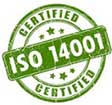Magnesium is the light-weight champion of all die casting metals.
If your project requires a lightweight die casting component with an excellent strength-to-weight ratio, magnesium die casting is the logical option. CWM die casts magnesium alloy AZ91D, a high-purity alloy which offers good corrosion resistance for your magnesium parts, as well as the following benefits:
- Longer tool life
- Easiest alloy to machine
- Good thermal and electrical conductivity
- Excellent for thin-wall, complex parts
- Excellent noise and vibration dampening properties
- Provides excellent EMI & RFI shielding
- Good finishing characteristics
- Light weight (75% lighter than steel, 33% lighter than aluminum) with high strength
- Magnesium parts scrap material is 100% recyclable
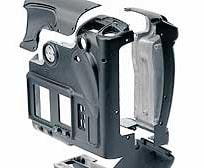
What is Magnesium?
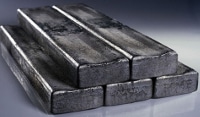 Magnesium is a base material for numerous alloys. AZ91D is the most common magnesium alloy for die casting. It offers very good castability and toughness, and is an ideal material for light weight, highly durable parts.
Magnesium is a base material for numerous alloys. AZ91D is the most common magnesium alloy for die casting. It offers very good castability and toughness, and is an ideal material for light weight, highly durable parts.
Hot-Chamber Die Casting - Magnesium
Chicago White Metal uses hot-chamber die casting to produce die cast magnesium parts. In this process, the metal injection components are submerged in a reservoir of molten magnesium. A hydraulically-powered piston forces the magnesium into the die, taking advantage of magnesium’s excellent flow characteristics to accurately produce complex shapes.
Why Choose Magnesium for your Die Casting Project?
 Compared to steel, magnesium is 75% lighter with no significant loss of strength. It is a far better material for complex, thin-walled, net shape or near-net shape castings and offers greater dimensional stability. Magnesium castings can meet tight tolerances that would be difficult or impossible to achieve with steel. Tooling costs can be lower for magnesium castings, as multiple parts can be easily consolidated into a single component. This also improves component rigidity and reduces welding and assembly costs.
Compared to steel, magnesium is 75% lighter with no significant loss of strength. It is a far better material for complex, thin-walled, net shape or near-net shape castings and offers greater dimensional stability. Magnesium castings can meet tight tolerances that would be difficult or impossible to achieve with steel. Tooling costs can be lower for magnesium castings, as multiple parts can be easily consolidated into a single component. This also improves component rigidity and reduces welding and assembly costs.
Compared to aluminum, magnesium is 33% lighter, with similar or improved mechanical properties, and machines easier. Magnesium provides greater corrosion resistance, and is better suited to large, thin-wall, net shape complex parts.
| Magnesium Die Casting | Primary Benefit of Mg | Secondary Benefit of Mg |
|---|---|---|
| vs. Steel Weldment | 75% Lighter | Less Expensive |
| vs. Aluminium Die Casting | 33% Lighter | Longer Tool Life |
| vs. Plastic Molding | Stronger, stiffer | Environmentally Stable |
Magnesium is stronger and stiffer than even the most advanced engineered plastics. It also provides greater wear resistance, higher temperature resistance, and better energy absorption/impact resistance characteristics.
Chicago White Metal was the first hot-chamber magnesium die casting company in North America and operates one of the largest, most advanced facilities for magnesium die casting. With 8 magnesium die casting machines from 200 to 650 tons of locking force, CWM can produce magnesium parts in a range of sizes from 0.75″ x 0.75″ to 18″ x 18″.
Request a quote or contact Chicago White Metal to discuss your project.
Learn More About Magnesium Die Casting:
This precision digital projector enclosure required high strength, rigidity, and low weight. The initial unit was produced as two magnesium Thixomold parts, assembled into one with seven bolts. CWM worked with the customer to redesign the enclosure as a single unit for Mg die casting production. The redesign resulted in a 40% final part cost reduction, a unit weight saving of 8%, and assured dimensional accuracy for improved projector focusing performance. View the PDF: Redesign Delivers 40% Unit Cost Saving, 8% Less Weight, Superior Performance |
This white paper gives an overview of the benefits of Magnesium Die Casting in comparison to plastic and CWM’s response to magnesium. This paper also references case studies and other valuable resources. View the PDF: Die Casting’s Answer to Plastic: Magnesium |
Chicago White Metal explores magnesium die casting in this informative webinar. Reviews the unique properties of die casting with magnesium that can be employed in a new design or conversion from another process. The information presented in this webinar is for OEM product designers and engineers who want to understand how magnesium die casting can improve product performance and reduce costs. 50 minutes. |
6-page guide outlines 10 key cost drivers that design engineers can leverage during the product design stage to yield significant cost savings in the custom production of die cast components. These specific planning steps aid in integrating the realities of die cast manufacturing. View the PDF: 10 Ways to Reduce the Costs of Die Cast Parts |
Two Al and one Mg die casting Awards were won by CWM for a first-ever triple win for outstanding custom die castings in the annual North American Die Casting Association’s International Die Casting Competition.(Includes photos) View the PDF: 1st-ever Triple Winners in NADCA Die Casting Contest |
2-page descriptive detailed data sheet for Chicago White Metal Casting’s current high-tech production specifications, material properties, and nominal chemistry for its Al, Mg & Zn alloy capabilities. View the PDF: CWM Al, Mg & Zn Die Cast Production Specs |
16-page, full-color comprehensive brochure on Chicago White Metal Casting capabilities in the most widely specified die casting alloys— Al, Mg & Zn. From design assistance through production, post-casting machining, surface finishing, and final product assembly. Detailed overview covers the experience, advanced technologies, and ISO 9001 & 14001 registered management systems that make CWM the cost-effective choice for net- and near-net-shape die cast parts. Includes case examples. View the PDF: CWM Comprehensive Die Casting Capabilities Brochure |
Updated and expanded 16-page reference to the major design & specification steps that drive the cost and performance of components die cast in Al, Mg, and Zn alloys. Among key design and production factors covered: Matching material properties; Die design & construction; Minimizing part porosity; Optimizing part heat transfer; Preplanning post-casting machining, if required; Dimensioning and tolerancing; Flash considerations; Prototyping; and as-cast finish guidelines. View the PDF: Design & Specification Guide for Custom Die Castings |
Preplanning Guide to aid OEMs considering custom die cast part production and reviewing existing literature. Organizes selected industry and CWM design resources into a 7-step sequence for the planning process. The source of each die casting design and production bulletin, tech brief, guide, checklist, and reference manual is listed, with many available for Web downloading or forwarding by Email. Bulletin contains direct Web links to aid access or requests for all listed documents. View the PDF: Die Casting Design & Production Preplanning Guide |
The first motocross design produced on American soil in 20 years features many rule-breaking design innovations, such as its “sweet,” solid shifting clutch, made with two high-tech Al die castings. The Al hub has 35 gear teeth cast to zero draft. The crankshaft and engine cover are AZ91D hot-chamber mag die castings, providing strength and lightweight. View the PDF: Dirt Bike Al Hub with 35 Gear Teeth Cast to Zero Draft |
Project managers for this satellite positioning system designed an Mg die cast enclosure as advanced as the new technology inside: ultra-rugged; lightweight for field use; waterproof; dustproof, with fail-safe EMI shielding. View the PDF: GPS Satellite Tracker Unit in Rugged, Lightweight Mg |
Designed as part of an advanced digital video processing and control system, Sony engineers specified “perfect parts” for their new professional video camera. CWM high-tech die casting was selected to produce 11 aluminum and hot-chamber magnesium housing components for the new camera. Superior as-cast surfaces were primary specifications. View the PDF: High-Tech Al & Mg for Advanced Video Imaging System |
World leader in global positioning systems selected Mg die castings for the key housing components in their new optical surveying instrument. Machined parts were rejected as cost prohibitive; plastic would not provide the required stiffness for highly accurate readings. View the PDF: Key High-Tech Mg Parts for Optical Survey System |
Outlines EMI/RFI shielding requirements for electronic assemblies. Presents relationships between common measures of shielding, advantages of die castings in general, and mag die castings in particular, for electronic enclosure shielding. Prepared by Norsk Hydro Magnesium. View the PDF: Magnesium EMI Shielding Characteristics |
This chart compares the material and physical properties for three popular die casting alloys: aluminum A380, magnesium AZ91D, Zinc #3, and ZA8. Several material properties such as tensile strength, impact, and yield strength can be compared between the three alloys. Physical properties such as density and conductivity can also be examined. View the PDF: Material / Physical Properties Comparison |
Two Mg 12 x 17 in. precision die cast housing walls for an all-in-one multi-media desktop medical imager provide lightweight, multiple functions, and reduced part counts. Each high-tech hot-chamber mag die casting delivers 25 tight-toleranced features as-cast. View the PDF: Medical Imager Mg Multi-function Housing Walls |
First professional digital camera in a magnesium die cast housing, jointly developed by Kodak and Nikon. Mag, selected over the usual alternative of plastic encasing a stamped metal body or an Al casting, provides ruggedness, lightweight, and the quality feel of metal. View the PDF: Mg Die Cast Professional Digital Camera Case |
Eight precision components form the self-contained display and keypad plus probe connector unit for a new all-digital portable ultrasound system. A total component weight of 1.725 lbs. makes the unit lighter than a molded plastic design, with greater drop strength. Winner of a “Design Award of Excellence” from the International Magnesium Assn. View the PDF: Mg Die Cast Ultrasound Portable Workstation Housing |
New Mg die cast support structure for an advanced rear view automotive mirror is now being produced in a high-pressure hot-chamber mag die casting machine with trimming operations eliminated. Employing “in-die de-gating,” two-stage ejection technology, borrowed from miniature Zn die cast production, savings include eliminating the trim die build. (Includes photos) View the PDF: Mg IMA Process Technology Award for Auto Mirror |
Mg alloy selection, machining and finishing data; chemical composition; material properties and die casting, and other characteristics. View the PDF: NADCA Standards: Magnesium Alloy Data |
NADCA updated comparison reviews die cast and plastic parts on material availability and recycling, material properties, design tolerances, and material costs. Examines the fact that plastic materials that offer higher strength than mag alloys have material costs that are at least four times greater than magnesium. View the PDF: NADCA: Comparison of Mag Die Casting & Plastic Parts |
Ruggedness, impact strength, and lightweight were key requirements for this handheld field unit for on-site analysis of voice and data. Specifications were met by this hot-chamber Mg die casting housing, which survives 4-foot drop tests to concrete. View the PDF: Only Mg Met Strength-Weight Specs for Voice/Data Unit |
Handheld fiber optic cable analyzer introduced in a high-tech magnesium die cast housing with elastomer overmolding. Innovative case, claimed to be the first overmolding of a complex die casting, offers improved performance over plastic at a 20% saving. View the PDF: Portable Die Cast Mg Case with Elastomer Overmolding |
Presentation to aid efficiency, functionality, and cost savings in the design and production of custom die castings. This narrated webinar focuses on helping effectively capitalize on today’s advanced die casting capabilities to improve performance and lower the costs of their custom components. 1 hour. |
Guide to developing optimum prototyping strategies for developing and testing component designs prior to final die casting die construction. Discusses prototyping alloys and processes, including new rapid prototyping technologies. View the PDF: Prototyping for Die Casting in All Alloys |
8-page condensed resource on evaluating finishing alternatives and optimizing component finishing decisions for Al, Mg, and Zn die cast products. Features a comparison table rating 32 surface coatings on relative cost, appearance, wear and corrosion resistance; Presents recommended finishing for a range of typical die cast components. View the PDF: Quick Guide to Surface Finishing for Al, Mg & Zn Parts |
This advanced spotting scope, offering the sharpest, brightest viewing at distances greater than possible with premium binoculars, has impressive housing specifications: lightweight portability, absolute ruggedness, 100% waterproof construction— it is nitrogen filled and guaranteed for life. Its central housing is produced as a hot-chamber magnesium high-precision die casting, weighing just 8.0 oz. (226.8 gm) with thin-wall sections as narrow as 0.039 in. (1.0 mm). View the PDF: Rugged Mg Spotting Scope Die Casting Award |
A 2-page technical paper. It offers the facts to five ‘known’ misconceptions about magnesium die casting. It also discusses the unique properties that can be gained from die casting with magnesium. View the PDF: Still Believe These Five Magnesium Myths? |
Presents the important factors that can affect the outcome of the final appearance of your die cast component when its surface finish is a critical issue. This narrated webinar will aid an understanding of the various finish options, and how their uses and limitations can make the difference between successful product development and costly results. 49 minutes. |
Brief overview of surface treatment systems for die cast part protection, decoration, and improving component performance, for all alloys: Al, Mg, Zn, and ZA. View the PDF: Surface Finishing for Die Casting Bulletin |
This overview for OEM designers and specifiers is a refresher for those OEM product design engineers, buyers, and purchasing managers already familiar with die casting; and for those new to the process, it provides a valuable framework or further pursuit. View the PDF: The Die Casting Process: An OEM Designer’s Overview |
If a structural component requires stiffness and extra strength, a proposed plastic part is usually a good candidate for production as a lightweight magnesium die casting. If EMI shielding and green recyclability are a concern, die cast Mg can be a hands-down choice View the PDF: The Plastic vs Die Casting Process Decision |
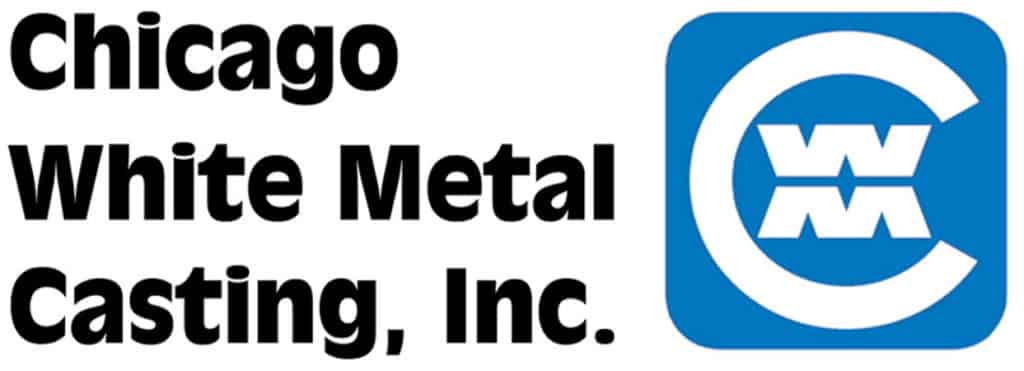
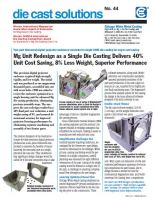 Redesign Delivers 40% Unit Cost Saving, 8% Less Weight, Superior Performance
Redesign Delivers 40% Unit Cost Saving, 8% Less Weight, Superior Performance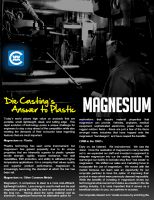 Die Casting’s Answer to Plastic: Magnesium
Die Casting’s Answer to Plastic: Magnesium Magnesium Die Casting: Solutions for Today’s Markets
Magnesium Die Casting: Solutions for Today’s Markets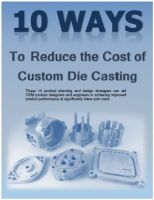 10 Ways to Reduce the Costs of Die Cast Parts
10 Ways to Reduce the Costs of Die Cast Parts 1st-ever Triple Winners in NADCA Die Casting Contest
1st-ever Triple Winners in NADCA Die Casting Contest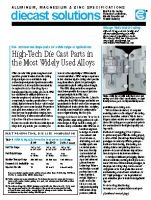 CWM Al, Mg & Zn Die Cast Production Specs
CWM Al, Mg & Zn Die Cast Production Specs 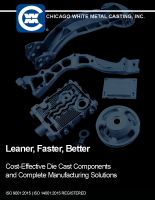 CWM Comprehensive Die Casting Capabilities Brochure
CWM Comprehensive Die Casting Capabilities Brochure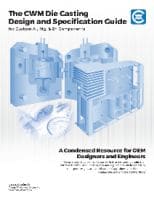 Design & Specification Guide for Custom Die Castings
Design & Specification Guide for Custom Die Castings Die Casting Design & Production Preplanning Guide
Die Casting Design & Production Preplanning Guide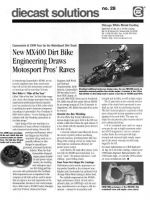 Dirt Bike Al Hub with 35 Gear Teeth Cast to Zero Draft
Dirt Bike Al Hub with 35 Gear Teeth Cast to Zero Draft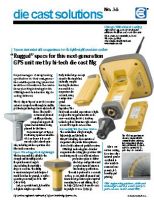 GPS Satellite Tracker Unit in Rugged, Lightweight Mg
GPS Satellite Tracker Unit in Rugged, Lightweight Mg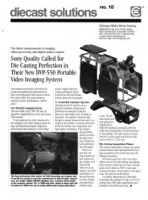 High-Tech Al & Mg for Advanced Video Imaging System
High-Tech Al & Mg for Advanced Video Imaging System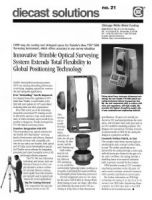 Key High-Tech Mg Parts for Optical Survey System
Key High-Tech Mg Parts for Optical Survey System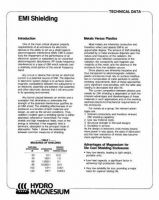 Magnesium EMI Shielding Characteristics
Magnesium EMI Shielding Characteristics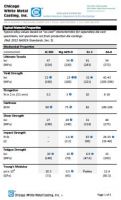 Material / Physical Properties Comparison
Material / Physical Properties Comparison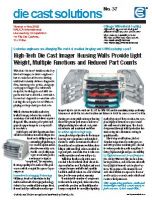 Medical Imager Mg Multi-function Housing Walls
Medical Imager Mg Multi-function Housing Walls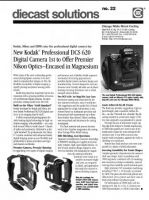 Mg Die Cast Professional Digital Camera Case
Mg Die Cast Professional Digital Camera Case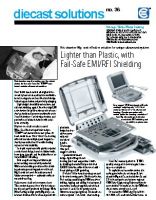 Mg Die Cast Ultrasound Portable Workstation Housing
Mg Die Cast Ultrasound Portable Workstation Housing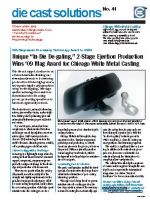 Mg IMA Process Technology Award for Auto Mirror
Mg IMA Process Technology Award for Auto Mirror NADCA Standards: Magnesium Alloy Data
NADCA Standards: Magnesium Alloy Data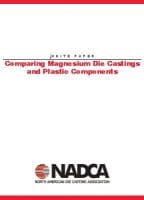 NADCA: Comparison of Mag Die Casting & Plastic Parts
NADCA: Comparison of Mag Die Casting & Plastic Parts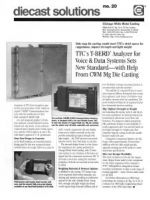 Only Mg Met Strength-Weight Specs for Voice/Data Unit
Only Mg Met Strength-Weight Specs for Voice/Data Unit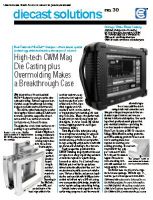 Portable Die Cast Mg Case with Elastomer Overmolding
Portable Die Cast Mg Case with Elastomer Overmolding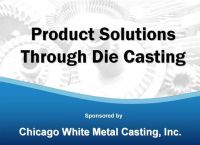 Product Solutions Through Die Casting
Product Solutions Through Die Casting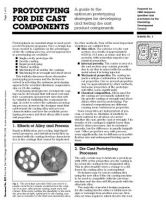 Prototyping for Die Casting in All Alloys
Prototyping for Die Casting in All Alloys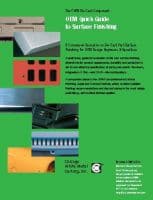 Quick Guide to Surface Finishing for Al, Mg & Zn Parts
Quick Guide to Surface Finishing for Al, Mg & Zn Parts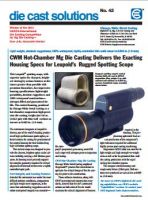 Rugged Mg Spotting Scope Die Casting Award
Rugged Mg Spotting Scope Die Casting Award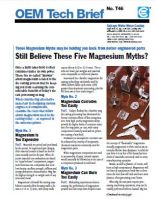 Still Believe These Five Magnesium Myths?
Still Believe These Five Magnesium Myths?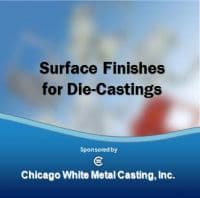 Surface Finishes for Die Casting
Surface Finishes for Die Casting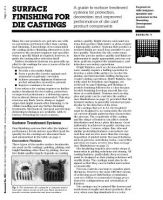 Surface Finishing for Die Casting Bulletin
Surface Finishing for Die Casting Bulletin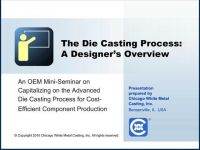 The Die Casting Process: An OEM Designer’s Overview
The Die Casting Process: An OEM Designer’s Overview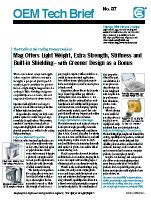 The Plastic vs Die Casting Process Decision
The Plastic vs Die Casting Process Decision

